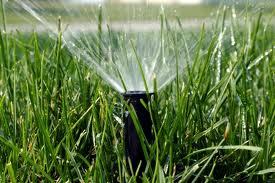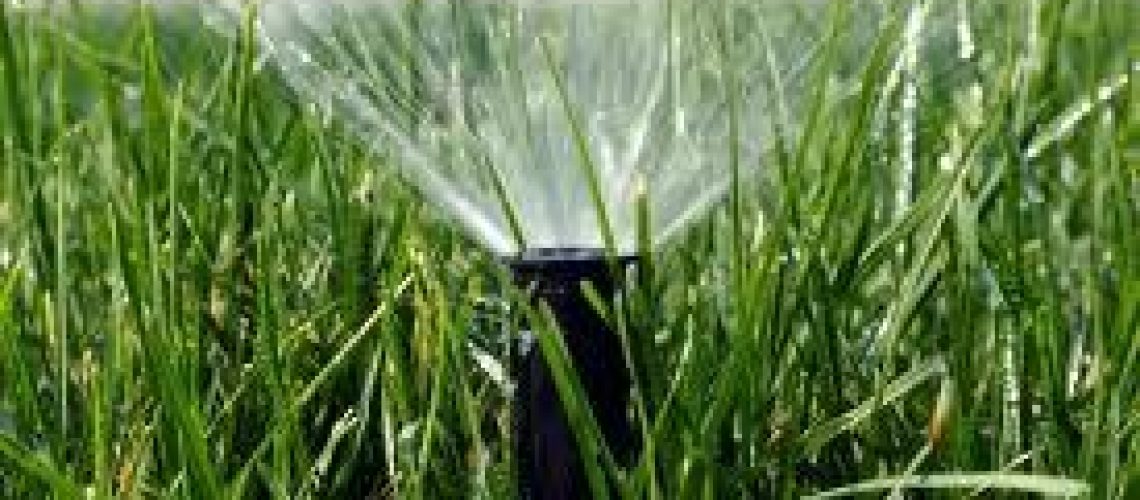
1) Matched-Precipitation Rate Sprinkler Heads
All sprinkler system heads on a given circuit should be the same type (e.g. rotors, pop-up spray, etc.) and have matched precipitation rate (in inches per hour). Heads with differing precipitation rates have widely varying operating times, which can lead to the over-watering of one area in order to sufficiently water another.
2) Head-to-Head Coverage
Our sprinkler systems are designed to operate with head-to-head coverage, where the spray from one sprinkler head reaches to the next, resulting in necessary overlap. Precipitation rates are based on the assumption of overlap. Places where the sprinkler’s spray pattern does not overlap are likely not getting sufficient water and may develop brown dry spots. These spots indicate the system has low “uniformity” of coverage. To compensate, one has to run the sprinklers for longer times to get adequate water to the dry spots, while the rest of the lawn is getting over-watered.
3) Precipitation Rate That Does Not Exceed the Soil’s Infiltration Rate
Based upon soil characteristics, water will soak into the ground at differing rates. Sandy soils have high (fast) infiltration rates, while clay soils have low (slow) infiltration rates. If the precipitation rate of the sprinkler heads exceeds the soil’s infiltration rate, then runoff and erosion occur (especially on slopes). On flat ground, this will also lead to piddling. If your sprinklers’ precipitation rate exceeds the infiltration rate, lower precipitation rate heads can be installed, or you can shorten your watering times and use multiple start times (e.g. 3 start times at 5 minutes each at 1-hour intervals instead of 15 minutes all at once) to allow the water to soak into the soil, and increase water efficiency.
4) Appropriate Water Pressure for Your Irrigation System
Well water or city recycled each sprinkler head is designed to operate within a certain range of pressure, typically around 40 to 50 pounds per square inch (PSI). When water pressure is too low, the sprinkler head will emit large drops and likely will not produce the proper spray pattern or a radius that reaches to the next head. If pressure is too high, the head will produce a fine mist, which leads to water loss due to evaporation and “fly-away” in even light winds. In addition, high pressure can lead to over spray and a distorted spray pattern, along with many other problems. A good pump is critical to maintain optimal performance.
5) Clean, Even Sprinkler Spray Pattern
If the sprinkler spray pattern of a head is distorted, browns spots may develop on the lawn. This may be caused by blockage in the screen or in the nozzle itself, and the head may need to be cleaned. If this does not fix the problem, the nozzle may be worn and needs to be replaced.
There should be no wasteful over spray onto sidewalk, patio, driveway or street. If there is over spray, replace the nozzle with another with the appropriate spray pattern or relocate the sprinkler head.
Vegetation or other objects should not obstruct the spray from the head. Trim back vegetation or raise the sprinkler heads as needed. This will increase the system’s uniformity of coverage, and water efficiency.
Interested in learning more about sprinkler systems?
Contact R&R Sprinkler & Landscape today at (239)772-2607


